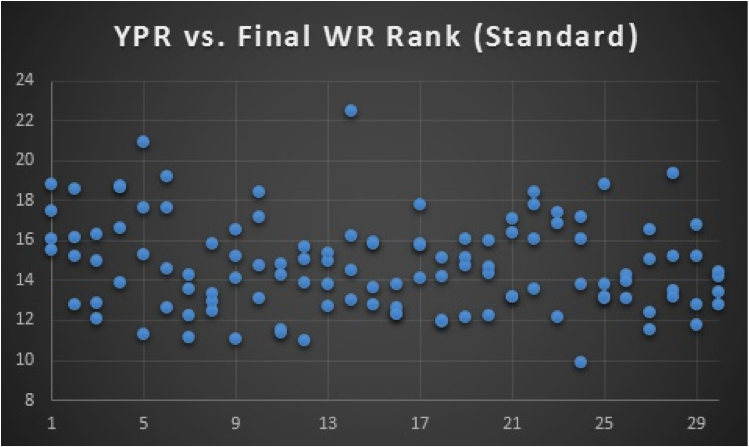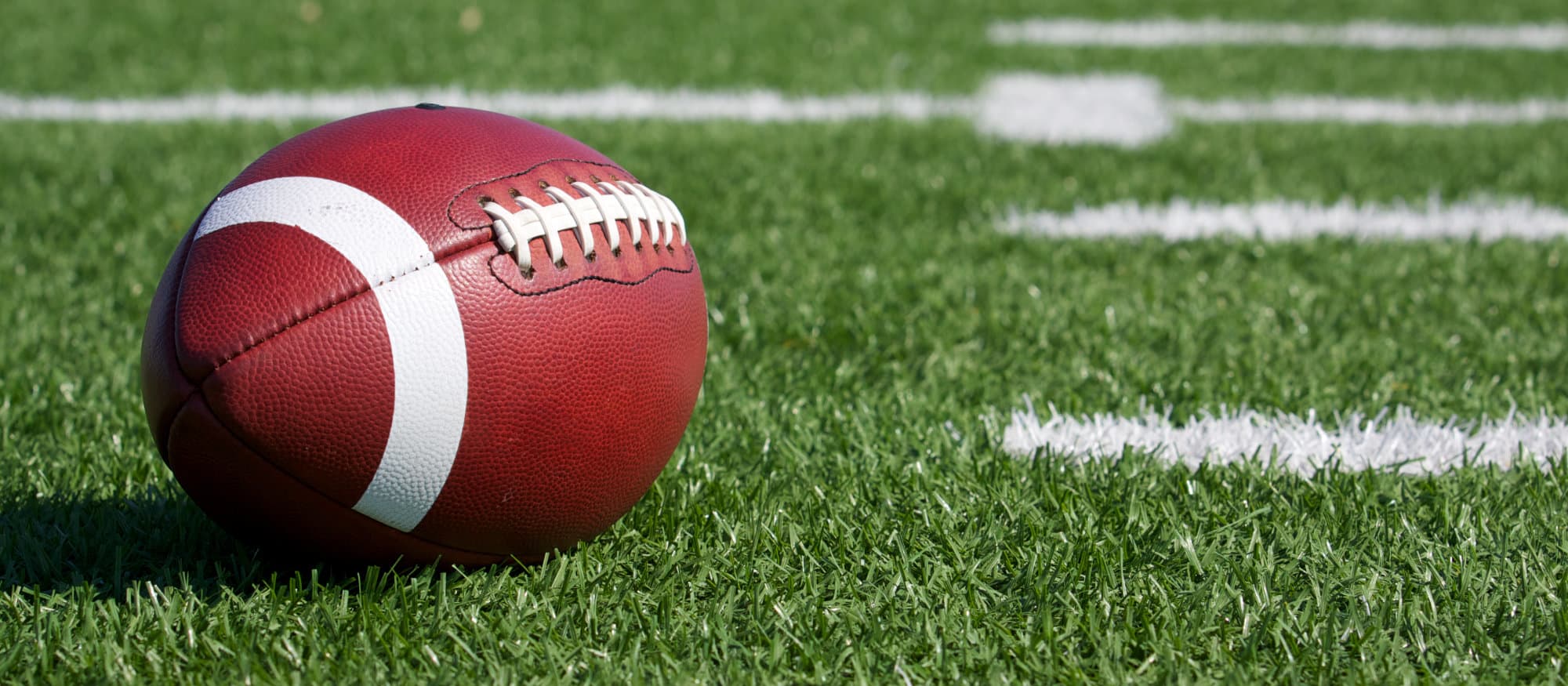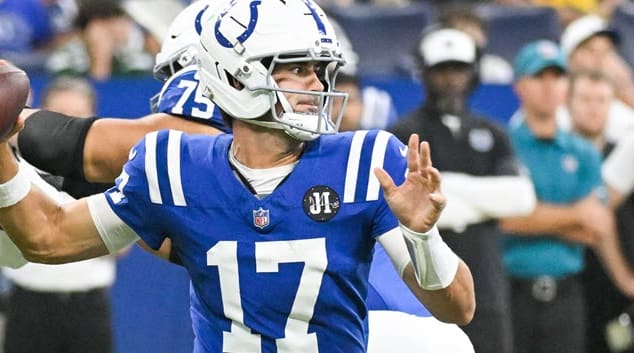How to Predict a WR Breakout
One of my favorite aspects of playing and writing about fantasy football is disproving conventional wisdom. I've done that with "truisms" such as running backs break down after X touches and rookie wide receivers make for high-upside selections.
When I'm brainstorming ideas for articles, I tend to think about arguments I believe to be true, but for which I don't actually have any data, then research them to see if they hold water. I did that recently with the idea that running backs need lots of carries to produce, which turned out to indeed be true.
Well, I've often wondered how much targets affect wide receivers. It's obvious more targets is better, but to what degree? My initial hunch was because there can be huge deviations in yards per reception for pass-catchers, the number of targets wouldn't matter nearly as much as the number of carries for running backs.
After running the numbers, it turns out while targets aren't quite as vital as carries, a receiver's workload is much more crucial to his production than I previously thought - way more valuable than his efficiency.
Before getting into the data, consider this stat. In 2012, there were only four receivers in the NFL who finished outside of the top 35 in targets but inside the top 30 in fantasy rank. That means that 26 of the top 30 wide receivers in fantasy were also ranked in the top 35 in targets, which
How to Predict a WR Breakout
One of my favorite aspects of playing and writing about fantasy football is disproving conventional wisdom. I've done that with "truisms" such as running backs break down after X touches and rookie wide receivers make for high-upside selections.
When I'm brainstorming ideas for articles, I tend to think about arguments I believe to be true, but for which I don't actually have any data, then research them to see if they hold water. I did that recently with the idea that running backs need lots of carries to produce, which turned out to indeed be true.
Well, I've often wondered how much targets affect wide receivers. It's obvious more targets is better, but to what degree? My initial hunch was because there can be huge deviations in yards per reception for pass-catchers, the number of targets wouldn't matter nearly as much as the number of carries for running backs.
After running the numbers, it turns out while targets aren't quite as vital as carries, a receiver's workload is much more crucial to his production than I previously thought - way more valuable than his efficiency.
Before getting into the data, consider this stat. In 2012, there were only four receivers in the NFL who finished outside of the top 35 in targets but inside the top 30 in fantasy rank. That means that 26 of the top 30 wide receivers in fantasy were also ranked in the top 35 in targets, which is pretty incredible.
Those four receivers were T.Y. Hilton and THREE players from Green Bay - Jordy Nelson, James Jones, and Randall Cobb.
So a basic rule-of-thumb for wide receivers is unless they play with Aaron Rodgers, there's almost zero chance of them finishing in the top 30 at the position with fewer than 90 targets. And to have a legitimate shot, it should really be closer to 100 or even 110.
The Numbers
So with that said, let's take a look at the correlation between a few stats and final wide receiver fantasy rank over the past four seasons. Note all the correlations are negative because as each increase, final wide receiver rank decreases (meaning it improves).

It's a little surprising to me that the wide receivers who've put up the most yards have been more valuable than those with the most touchdowns. Yards account for a greater percentage of points, but there's more deviation in touchdowns.
I've actually built my wide receiver corps around red-zone ability in recent years - which I'll likely continue to do since it's such a consistent stat from year to year - but the receivers with the most points are more likely to lead the league in yards than touchdowns.
It's not at all shocking that yards and touchdowns are the most strongly correlated with fantasy rank since they're components of it; fantasy owners get points for yards and scores, not for targets or YPR. But take a look at the difference between those latter two stats: a -0.55 correlation coefficient for targets, compared to just -0.15 for YPR.
Although there's still a correlation between YPR and wide receiver rank, it's rather insignificant compared to that for targets. If you want to project touchdowns, and especially yards, you're better off doing your best to accurately predict targets instead of YPR.
To see that difference visualized, I plotted the top 30 receivers from each of the past four seasons in terms of YPR and fantasy rank.

There's basically no trend here at all. On the other hand, take a look at targets vs. fantasy rank.

Clearly a more linear relationship. Of the wide receivers to finish in the top five over the past four seasons, only Jordy Nelson in 2011 had fewer than 100 targets (and he scored 15 times). Meanwhile, no wide receiver to finish first has had fewer than 153 targets, with the average being 171.5.
It appears as though a wide receiver's workload is way more vital to his production than I initially believed. And if you're going to bank on a team's No. 2 wide receiver who you know won't have a realistic shot at more than 110 or so targets, he better be one heck of a red-zone threat.
Jonathan Bales is the author of the Fantasy Football for Smart People book series. He also runs the "Running the Numbers" blog at DallasCowboys.com and writes for the New York Times.



























